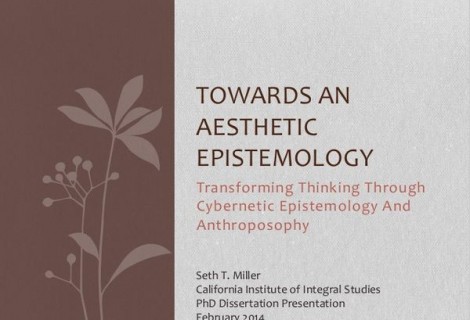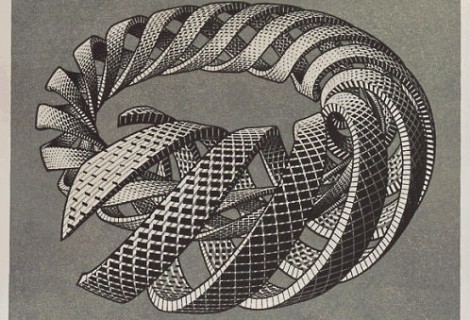Form and content – two levels of change
« Previous Page | 1 2 3 4 5 6 7 8 9 | View All | Next Page »
Meditation
What is amazing is that human beings have the capacity become awake to just those unconscious and semi-conscious processes that influence who we are and how we know (ourselves and the world). As already stated, awareness is not enough by itself, and can even be detrimental (this plays a very important role in addiction). Nevertheless, the importance of awareness of the recursive links between our epistemological processes and the worlds they reveal to us cannot be underestimated.
Humans have been developing techniques designed to bring attention to this dynamic in a higher-order way for thousands of years. The archetype for the technique is meditation. Meditation can be thought of as a second order process par excellence, because it is meant specifically to move attention in a recursive loop: it is a throwing back of attention onto itself, rather than onto the content of attention that normally takes up our waking moments. Repeated direction of attention to attention is the primary way through which we can become aware of the way that our attention is (self-)constructed. Essentially, meditation offers a higher order doorway out of (into/through) the maze of unconscious and semi-conscious epistemological patterns that normally steer us through our days.
The field of cybernetic epistemology is the study of recursive patterns of knowing, and is an arena ripe for more overt connection to the realms of human self-direction that have been practiced for millennia in diverse ways across the globe, and which are still under continual evolution and development. Cybernetic epistemology, with is unique conceptual tools and background, can bring a kind of theoretical clarity to the very complex and difficult task of understanding how change happens. It is interested in the patterns of change, and the patterns of the patterns. Much work remains to be done to develop and explore the fruitful connections between the abstractions of cybernetic epistemology and the experimental, embodied, and lived diversity encountered by people who have an interest in understanding and working with change in wise and integral ways.
This essay is only meant to point out a central piece of this work: recognition of the difference between the level of Form and the level of content in recursive systems, and how that difference can make a difference with respect to thinking about change.
« Previous Page | 1 2 3 4 5 6 7 8 9 | View All | Next Page »






Firstly, my sympathies.Secondly, maybe a lttile hope. As you know I plunged in to this world of “EdTech” rather late – and it’s been my observation that most of the people writing about EdTech are no longer writing about EdTech at all. The interesting ones are writing about culture, society and life. EdTech is just an increasingly bare frame to hang more interesting ideas on. The interesting folks add insight, the duller ones platitudes and clunking rhetoric but the framework is no longer important. With your brain and your cross-disciplinary magpie-ism you could find a home in any academic discipline. Of that I am sure.